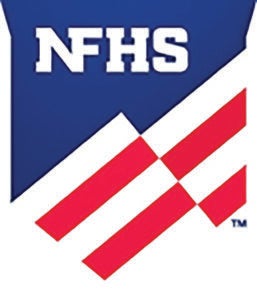NFHS emphasizes keeping education ahead of school-based sports
Published 10:54 pm Tuesday, June 18, 2024
INDIANAPOLIS, In — At about this time three years ago, leaders in the high school sports world were concerned about the fallout from the NCAA’s decision to allow college athletes to monetize their success and profit from their own Name, Image and Likeness (NIL).
The NFHS expressed concern about high school athletes profiting from their NIL. After all, NFHS member state associations had rules in place that prohibited student-athletes from receiving money in any form that was connected to wearing their school uniform.
 Since that historic ruling in college sports, 36 state high school associations have enacted NIL policies, with the Florida High School Athletic Association being the latest last week. The landscape has been considerably different at the high school level as no state association permits a student-athlete to profit from their NIL while wearing the school uniform or connected to the school in any fashion. High school NIL rules afford athletes the same entrepreneurial opportunities as any high school student.
Since that historic ruling in college sports, 36 state high school associations have enacted NIL policies, with the Florida High School Athletic Association being the latest last week. The landscape has been considerably different at the high school level as no state association permits a student-athlete to profit from their NIL while wearing the school uniform or connected to the school in any fashion. High school NIL rules afford athletes the same entrepreneurial opportunities as any high school student.
While about two-thirds of the state associations have established NIL policies, the number of student-athletes involved in NIL deals has been minimal, and recent statistics from the Georgia High School Association confirm that belief. In an article in the Connect Savannah publication, the GHSA noted that since updating its NIL policies last October, only 44 (.01 percent) of 429,714 eligible student-athletes have signed and submitted NIL deals.
As the new model of college sports has evolved the past three years, the NFHS and its member state associations have been working to preserve the education-based nature of high school sports, while also providing athletes the same NIL opportunities as other high school students.
Now, a new challenge has appeared on the horizon with the announcement last month that the NCAA and its five power conferences have agreed to allow schools to directly pay players for the first time in the 100-plus-year history of college sports. While details are still pending, by the fall of 2025 schools could be sharing up to $20 million per year with their athletes.
Opinions on the merits of paying college athletes differ, but there should be no argument at the high school level. High school sports, with almost eight million participants nationwide, are much different than college sports. High school sports are about the team – not an individual’s own personal pursuit of excellence. The primary reason that an overwhelming majority of high school students play sports is to have fun and spend significant and meaningful time with their peers. The focus is not on self but rather the team.
Although it is uncertain about how these changes will develop, this deterioration of the amateur concept at the college level must not affect the team-based concept in education-based high school sports. The age-old plan of colleges relying on high schools for their players will continue; however, high school coaches and administrators must guard against an individual’s pursuit of a college scholarship – or direct payments in college sports – overriding the team’s goals.
While the route to playing sports in college may change for the three to five percent of high school athletes who have that opportunity, the focus must remain on the overall high school educational experience. Some will play sports at the college level and move on to their chosen careers; others will take those values of teamwork, discipline and self-confidence from the playing field directly into their chosen careers.
Those days of playing for the love of the game may be gone at the college level, but there is nothing more fundamental to the past – and future – history of high school sports in the United States than the concept of amateurism. Let’s do everything possible to keep education at the forefront of school-based sports.
—————
Dr. Karissa L. Niehoff is in her sixth year as chief executive officer of the National Federation of State High School Associations (NFHS) in Indianapolis, Indiana.

